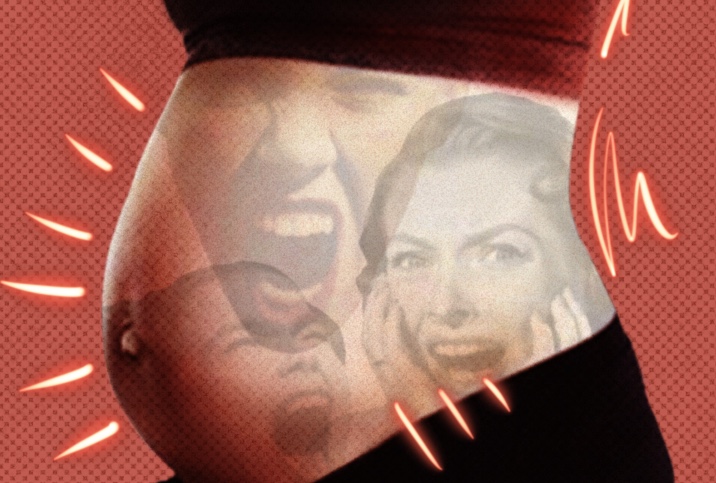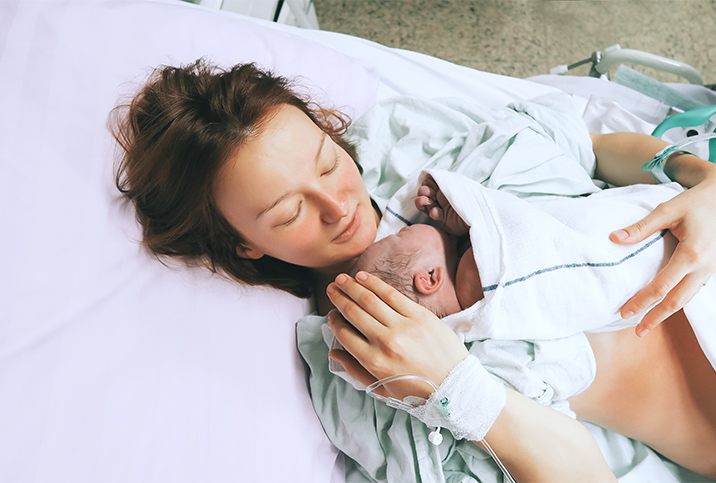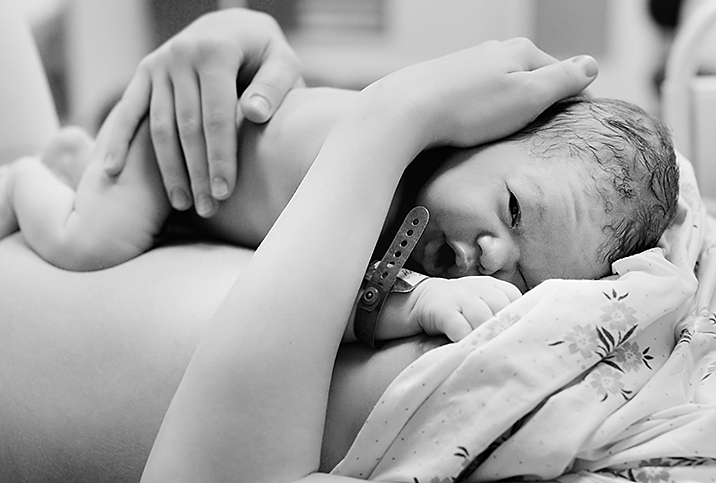How Do Braxton Hicks Contractions Compare to Labor Pains?

Many pregnant women experience Braxton Hicks contractions. Why do some women experience these uterine contractions and others don't? Here's what you should know about these false labor pains and how to tell the difference from the real thing.
What are false labor pains?
Braxton Hicks contractions, also known as false labor pains, are sporadic contractions that prepare the uterus for labor.
"They can start as early as six weeks of gestation but are not felt until the second or third trimester of pregnancy," said Dawn K. George, M.D., an obstetrician-gynecologist at KIDZ Medical Services in Florida.
Every pregnancy is different, but all women experience Braxton Hicks contractions. Not all women feel them, however, which is often the case if they occur early in pregnancy. Although they can take some women by surprise, it's important to remember that they are a normal part of pregnancy.
It's simply your body's way of preparing for the arrival of your baby.
What do they feel like?
Braxton Hicks contractions aren't something to fear, but understandably, they can cause discomfort for some pregnant women.
"They [Braxton Hicks] present as tightening or hardening of the uterus that comes and goes, and are usually not painful, although they can be uncomfortable," said Stephanie Hack, M.D., M.P.H., an OB-GYN in Washington, D.C., and the host of the "Lady Parts Doctor" podcast.
Some women describe Braxton Hicks movements as "feeling like the baby is balling up in my belly," Hack said. Of course, this feeling can vary from person to person. According to George, some women compare the contractions to mild menstrual cramps.
The important aspect to note is that Braxton Hicks contractions should not be painful. If you do experience pain, contact your doctor or midwife immediately.
How long do these contractions last?
Braxton Hicks contractions can be unpredictable. Unlike labor pains, these contractions come and go. The duration and frequency can vary, but Hack said they usually last anywhere from 30 seconds to two minutes.
"They can last for several minutes and stop, only to reappear several hours later," George said. "Braxton Hicks contractions can be triggered when women are very active, when the bladder is full, following intercourse and when the woman is dehydrated."
The difference between Braxton Hicks and true labor
Some women confuse Braxton Hicks contractions with labor contractions and may begin to panic. But don't worry, there are usually a few differences.
The main point to remember is that Braxton Hicks contractions are irregular, while labor contractions are consistent and increase in strength and frequency over time, Hack explained.
Braxton Hicks movements are uncomfortable at times, but they shouldn't feel painful, Hack said. In comparison, labor contractions tend to be painful and may be accompanied by leaking amniotic fluid, vaginal bleeding or changes in fetal movement.
Labor contractions continue even when you rest or move around, while Braxton Hicks tensing often stops while walking, resting or with a change of position. True labor contractions steadily get stronger and come at regular intervals. During active labor, these contractions get closer together, with each contraction lasting about 60 to 90 seconds.
Another key difference between Braxton Hicks and true labor contractions is the location of the pain.
"Pain from true labor contractions usually starts in the back and moves to the front. Pain from false contractions usually is felt only in the front," George explained.
Contact your doctor or midwife for advice if you have any doubts or worries.
How to relieve Braxton Hicks
Some women can ignore their false labor pains and continue their daily activities. But that might not be the case for every woman. Some people in active labor don't feel pain during childbirth, so watch for other signs of labor.
Ways to help relieve Braxton Hicks contractions include:
- Going for a gentle walk
- Changing position (lying down, sitting up or turning over)
- Stopping whatever you're doing and resting
- Emptying your bowels (if needed)
- Staying hydrated by sipping on water throughout the day
- Relaxing in a warm bath
The bottom line
Feeling your abdomen tighten and release can be alarming. If the contractions don't increase in intervals and intensity, they are likely false labor pains. If you have other signs of labor, time your contractions and call your doctor to determine your next steps.
Do you need to find a new healthcare professional? Let Giddy Telehealth point you in the right direction. Use the online portal to easily browse hundreds of doctors in various specialties.


















